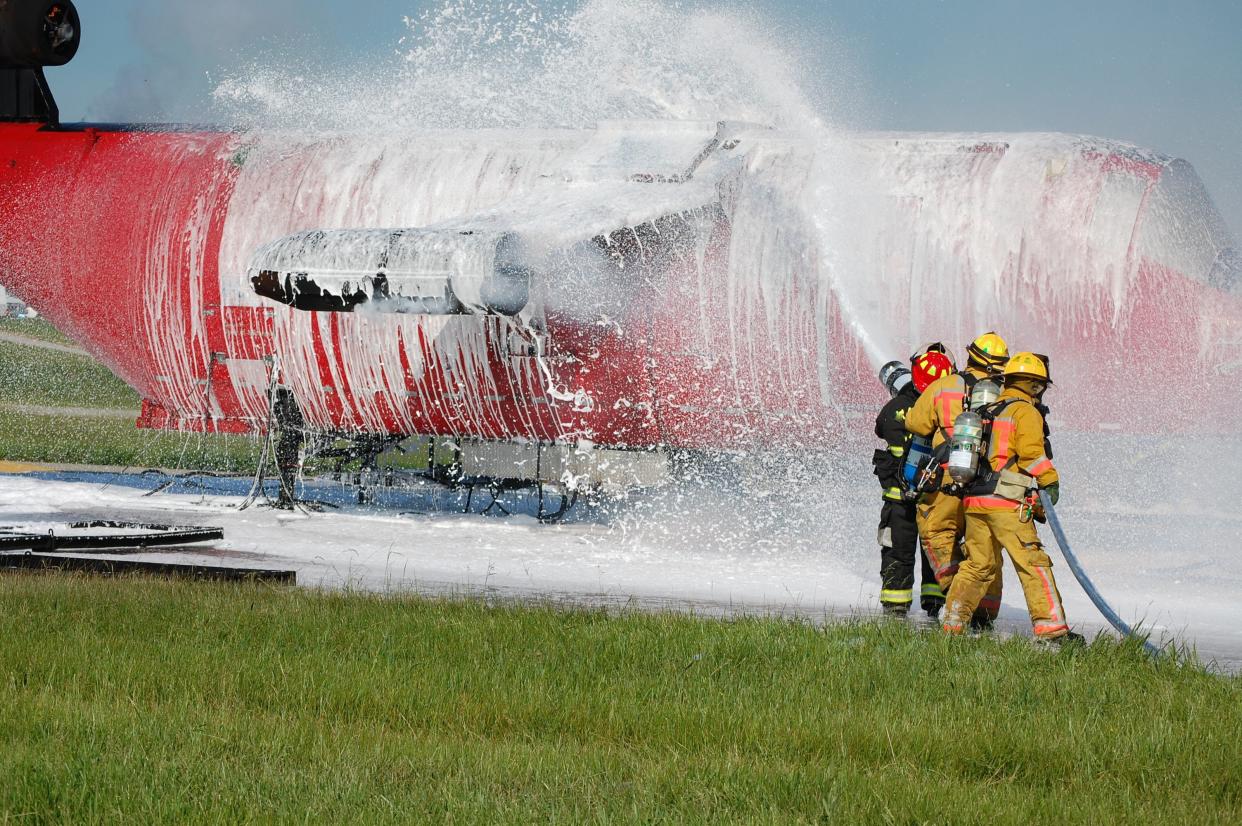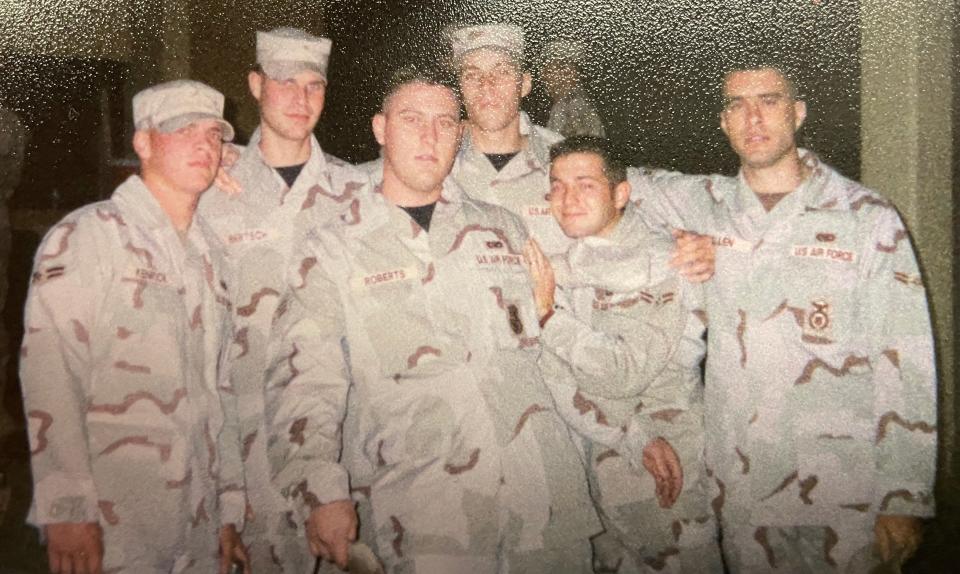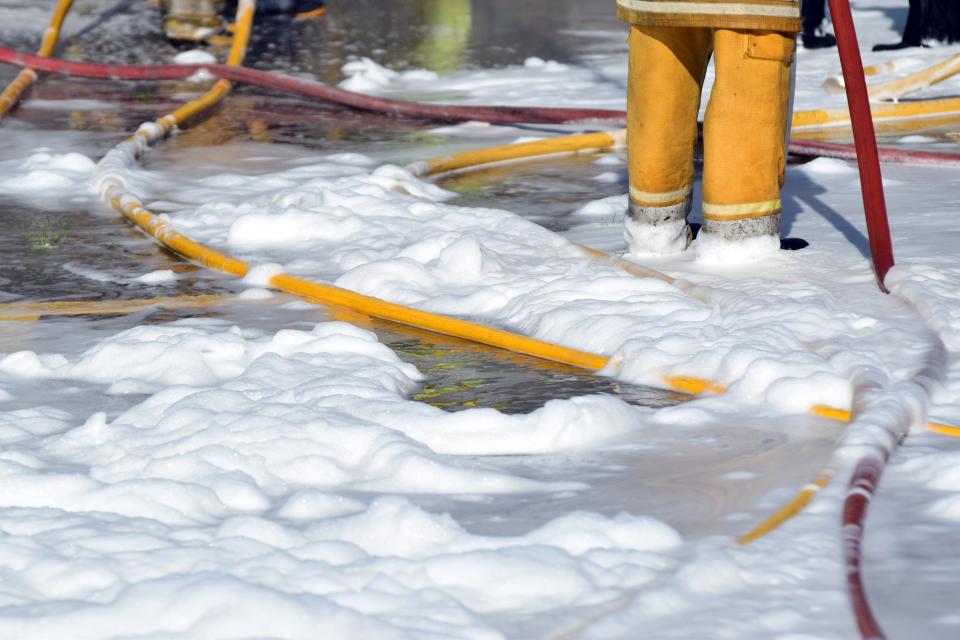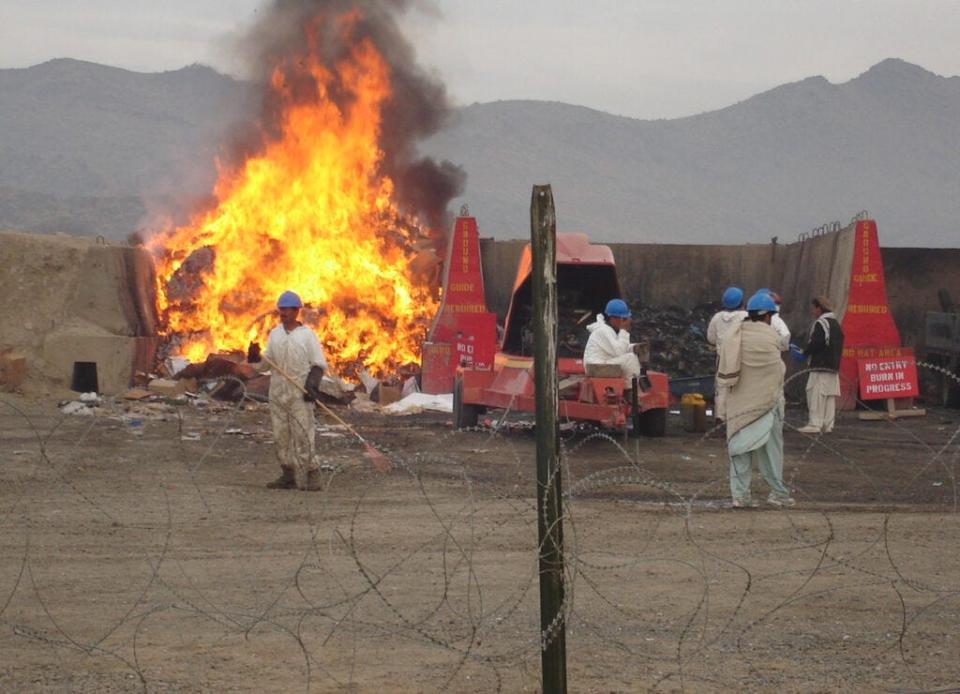Illnesses related to firefighting foam latest burden for South Dakota veterans

Military veterans who served at Ellsworth Air Force Base near Rapid City and at Joe Foss Field Air National Guard Station in Sioux Falls are part of new national lawsuits seeking damages due to exposure to toxic chemicals in firefighting foam.
The lawsuits center on cancers, hormonal problems and gastrointestinal illnesses believed to have been caused by exposure to so-called forever chemicals present in firefighting foam that was used for more than 60 years to put out petroleum fires at U.S. airports and military installations.
The chemicals are now known to have caused contamination of groundwater wells and drinking water systems across the country. Civilians who lived or worked at or near military facilities have also gotten sick and are part of the ongoing cases.
The illnesses related to service at military bases in South Dakota are the latest of a series of health problems Rushmore State veterans have suffered due to use of chemicals and exposure to toxic substances in both combat and non-combat environments.
In previous reporting, South Dakota News Watch has shown how South Dakota residents suffered serious illnesses due to toxic exposure while on duty, and how in most cases the military knew of the risks but did not act until after sicknesses began to pile up.

Air Force veteran Casey Kenrick of Rapid City — who suffers from ulcerative colitis — has signed onto the class-action lawsuit seeking damages for exposure to chemicals from firefighting foam used at Ellsworth.
The dangerous firefighting foam remains in use by the U.S. military, though a gradual reduction has been underway for several years and a full phase-out is expected by the end of 2024, according to Yahn Olson, a lawyer for the Environmental Litigation Group, P.C.
“Members of our military are still being put at risk today,” he said.
The firefighting foam illnesses follow a pattern of other health problems caused by use of Agent Orange defoliant in Vietnam, hazardous fumes from burn pits in the Middle East and extreme toxicity of drinking water at Camp Lejeune.
“It seems like the one thing you don’t have to worry about is dying in a war zone, but you do have to worry about toxic exposure to Agent Orange, asbestos, burn pits or contaminated water,” said Olson.
Officials from the Air Force and National Guard said they are aware of contamination at Ellsworth and Foss, and they’re taking steps to both keep people safe and remediate the problems. As of 2023, no one is known to be exposed to further PFAS exposure at the bases, they said.

Kenrick said he remains “disillusioned” that the military apparently knew about the dangers of the firefighting foam and other toxic exposures to veterans but did not take action to immediately protect service men and women.
“Obviously they knew something was wrong, but the military doesn’t seem to do anything proactive,” said Kenrick, a lieutenant in the Pennington County Sheriff’s Office.
“They only seem to act after someone sues them, so in a sense the government is complicit in this if they knew about it and didn’t take any preventive or proactive approaches to deal with these problems and then help these people.”
The new multi-district litigation lawsuits center on illnesses caused by perfluoroalkyl and polyfluoroalkyl substances, or PFAS, which can be found in a wide range of products ranging from firefighting foam to clothing to household products like non-stick cookware.
PFAS have increasingly raised health concerns after being found in drinking water systems and groundwater wells across the country, including at private wells in South Dakota and in municipal wells in Sioux Falls.

PFAS and related chemicals known as PFOS and PFOA are widely known as “forever chemicals” because their chemical composition makes them extremely difficult to break down within water, soil or the human body.
In June, the 3M Co. agreed to pay $10.3 billion to hundreds of municipal water systems across the country to settle claims that the firefighting foam produced by 3M caused runoff of PFAS chemicals that seeped into drinking water systems.
Large-scale testing programs and remediation efforts are already underway to reduce the potential health effects of PFAS contamination in water systems across the U.S., including at military bases.
The PFAS chemicals in firefighting foam are particularly worrisome due to decades-long use and the foam’s propensity to liquify and enter into groundwater wells and public water systems.

Kenrick, 43, lived both in on-base dorms and in housing outside of Ellsworth, where he used the water for drinking, cooking and bathing.
While at Ellsworth, Kenrick was diagnosed with ulcerative colitis, an inflammatory bowel disease that can be debilitating for some patients.
Kenrick said he doesn’t have direct evidence that exposure to toxic water or chemicals caused his medical conditions. But he has strong suspicions based on his own experiences and the pattern of illnesses that have afflicted other veterans he served with at Ellsworth.
“I can say for a fact that my condition got better when I got away from there (Ellsworth), so I would say there is a connection,” he said.

Mathew Bergendahl of Olympia, Washington, was present during numerous training exercises at Ellsworth where the toxic firefighting foam was used.
In 2018, Bergendahl, 44, was diagnosed with leukemia, which doesn't run in his family.
Bergendahl said several of the people he served with at Ellsworth have died of cancer at relatively young ages.
At Ellsworth, training activities using the firefighting foam were halted in 2016 and systems using the foam in hangers on base were shut down in March 2023.
Millions in Department of Defense funds have already been spent to remediate PFAS contamination at Ellsworth and Foss, and investigations into the nature and extent of PFAS contamination in soil, groundwater, surface water and sediment are underway at both sites.
Resources for veterans
Here are some online resources for veterans to learn more about potential exposure to toxic PFAS chemicals.
U.S. Department of Veterans Affairs PFAS website: https://www.publichealth.va.gov/exposures/pfas.asp
Air Force website on PFAS exposure: https://www.afcec.af.mil/WhatWeDo/Environment/Perfluorinated-
Compounds/ Department of Defense website on PFAS exposure: https://www.acq.osd.mil/eie/eer/ecc/pfas/index.html
Defense Health Agency PFAS website: https://www.health.mil/Military-Health-Topics/Health-Readiness/Public-Health/PFAS
Veterans Crisis Line: Dial 988, then press 1
This article was produced by South Dakota News Watch, a non-profit journalism organization located online at sdnewswatch.org.
This article originally appeared on Sioux Falls Argus Leader: Illnesses related to firefighting foam latest burden for SD veterans

